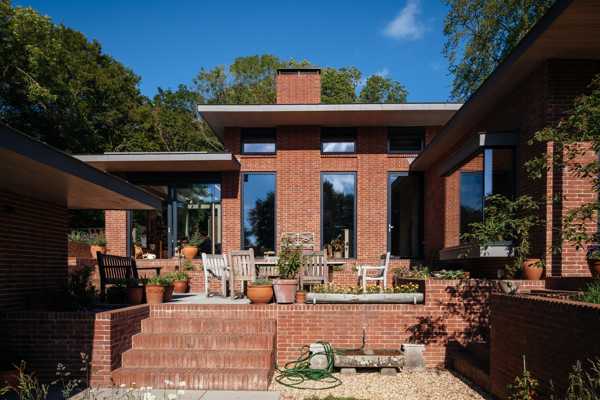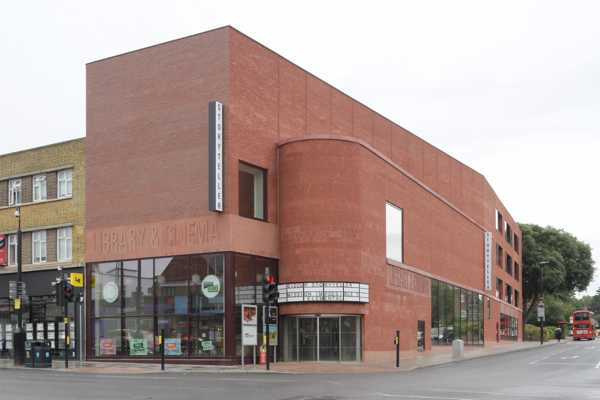Facing bricksBrick K
Technische informatie
- Kleur omschrijving
- The colour of the body is red, red-brown to red-bleu.
- Afmeting (L x B x H)
- ca. 230x75x55 mm (LxBxH)
- Aantal / m² met een traditionele voeg
- 62 (12 mm)
- Aantal / m² met een dunne voeg
- 70 (6 mm)
- Afmeting 2
- ca. 215x100x65 mm (LxBxH) - On demand > 2000 m²
Brick K
Bright red ecological Waal format
Brick K is a bright red (Basic red pure) moulded brick produced using the Wasserstrich method. It carries both our Hand-Made label and the ECO-7-size label. Our Hand-Made label guarantees a strong, natural nuance. The unsanded Brick K also carries the ECO-7-size label because it is 7 cm deep, unlike the classic Waal format which is 10 cm deep
reportage Brick K

Red brick at one with the surrounding nature
New education campus for the Department of Health Care
Today's health care – more than ever before – needs a strong link between the daily practice, education, research and society. With this in mind, the Institute of Higher Vocational Nursing Education in Genk, UC Leuven-Limburg institute of higher education and Oost-Limburg Hospital joined forces.

The grouping and massing of the new housing blocks negotiate between the contrasting urban conditions of the post-war estate and the Victorian street
Ecological ‘Brick K’ facing brick harmonises with neighbouring buildings but has its own distinct voice
Taylor & Chatto and Wilmott Courts form a pair of schemes, commissioned by Hackney Council, for new mixed tenure housing along with public realm and landscape improvements on infill sites on the edge of the postwar Frampton Park Estate.

Eco-conscious living in the Gardener’s Cottage
A sustainable family home harmonizing with the traditional local village architecture and New Forest National Park district.
In the New Forest National Park district with intimate connections to the surrounding landscape, PAD studio designed a compact eco-conscious family home.

Award-winning bold architectural statement in urban setting with vibrant red facing brick
Mixed-use project with library, cinema and residential building for London suburb
Sidcup Storyteller, a striking new public building by DRDH Architects, plays a central role in the revitalisation of Sidcup’s historic high street in the London Borough of Bexley. With a total area of 1,932m² and a budget of £7.7 million, this mixed-use project brings together civic, cultural, and residential functions in a bold yet finely crafted architectural statement.
Lees verder
Referenties
Verwerkingstips
Preparation of the construction site
- Always order the full amount of bricks required for a specific site. In this way, the entire order can be made during one production run.
- Try to have the full order supplied at one time. If this creates several deliveries, always mix a number of packs from the previous delivery with a number of packs from the new delivery. This procedure is especially recommended in case of re-order or for an additional order.
- Take bricks diagonally across the pack.
- Draw and use bricks from at least five different packs.
- For setting out, use bricks from the delivery made to the site in question. Do not exclusively use the theoretical dimensions of the brick, or samples previously supplied, or different production run from that intended for the site.
- As soon as the bricks arrive on site, check delivery tickets and certificates against the specification and order. Also check that there are no visible inconsistencies with the order.
- Do not lay bricks in freezing weather or protect the ‘fresh’ masonry with insulating mats in order to avoid frost damage to the mortar.
- In the case of prolonged dry hot weather, lightly dampen the newly laid brickwork to stop the mortar drying and curing too quickly.
- Do not lay bricks in precipitation in order to prevent mortar from running on the wall.
Avoid Efflorescence
- During and after laying, protect the newly built brickwork for a height of at least 60 cm - but ensure there is airspace between the brick face and the waterproof covering.
- Provisionally install rainwater down pipes to avoid saturation of the newly laid brickwork
- Never lay bricks in driving rain conditions


























